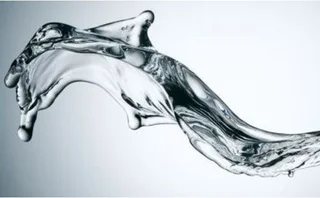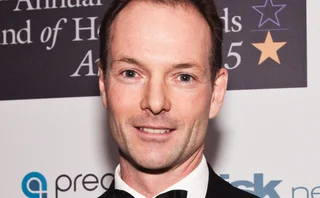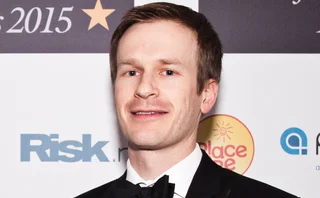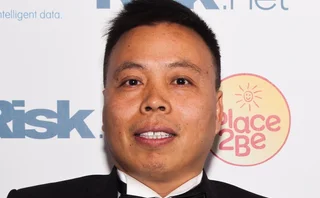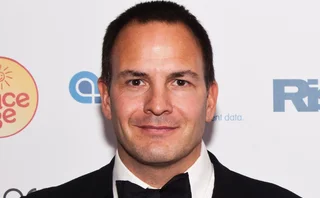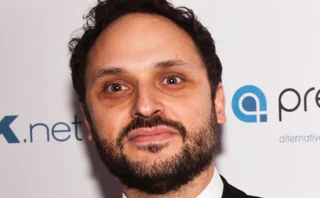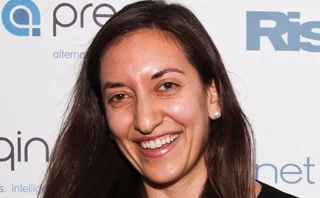
Investor profile: Pictet Alternative Investments
Despite the tarnished status of some Swiss banks and funds of hedge funds, Pictet Alterative Investments believes it has emerged from the crisis with its reputation and a strong client base intact.

Not surprisingly, Nicolas Campiche, CEO of Pictet Alternative Investments, puts reputation at the top of his list of priorities. With 200 years of banking experience behind it, the alternatives area has a lot to live up to.
When some of the much-vaunted Swiss banks ran aground during the financial crisis, having invested rather impudently in Madoff funds and with liquidity mis-matches, Pictet was able to maintain its usual calm.
Although Campiche admits the funds of hedge funds (FoHFs) side of the business did not emerge unscathed from the financial crisis – its funds on average were down around 15% – Pictet was able to meet all redemption requests with no suspensions or gating and no external finance needed. Close attention to risk controls and an emphasis on liquidity were the reason for this, believes Campiche.
Set up around 20 years ago, Pictet Alternative Investments runs a stable of FoHFs and private equity funds. It launched its first FoHF in June 1994 and since then has offered a broad spectrum of products. All of them, says Campiche, are based on what he sees as a “very distinctive investment philosophy”. It puts emphasis on the expertise of its staff, priding itself on a low turnover. Selection is from the bottom up and Pictet is not afraid to go for the smaller funds, as long as the strategy is right and the liquidity terms acceptable. It is risk-averse and is in a relationship with its clients for the long term.
“We run liquid portfolios,” he says. “We will not invest in a manager with a long lock-up. There are some exceptions but by and large we have no long exposures. In a crisis that is one reason we can liquidate our portfolio.”
He believes FoHFs can “go wrong” investing only in large funds. “We see good managers at $2 billion and at $500 million. For us it is all about bottom-up selection. We want managers who have experience and who focus on performance as much as they focus on risk. We do have some very large funds in our portfolio but we also have much smaller managers. We’ve been continuously increasing the proportion of these seasoned managers in our products,” he explains.
Campiche also sees Pictet’s stable client base as another advantage for the FoHF provider. These are clients, he says, that have been built up over the years through the private bank connection. “They are not volatile people. They have been investors in hedge funds for 20 years and some of them understand the nature of investment in these products.”
He believes the trust in Pictet and its reputation helped bring in $400 million in assets under management (AUM) in 2010, bringing the total AUM to around $8 billion, still some way below the over $10 billion managed in 2007 in hedge funds alone.
Adding to this solid base is Campiche’s next goal. He is now looking to expand his client list, targeting institutional investors such as smaller pension funds. Clients at present are mostly French, German and Swiss with a smattering from the Netherlands and Central Europe.
While the client base will continue to be a majority of high net worth individuals (HNWIs), the proportion is expected to fall to 60% with 40% institutional clients over the next couple of years.
How he will build up this client base is, he admits, all about performance. “We are open. We can’t hide our performance. This is the first area where we dedicate time and resources: we want the right services, skills and investment process. We want a process investors can be confident in,” he says.
At the centre of this is a reliance on people with talent and experience. He points out that Pictet continued hiring even through 2008. “The key driver of our success is the people in our team,” he declares, adding that he plans to add more people to the team this year.
Looking to the future Campiche expects the evolution of FoHFs to continue. “We need to adapt to client needs with services and products that have value added in client portfolios.” To this end he thinks tailor-made products and portfolios are the way forward. “We will see more niche and tailor-made portfolios. This will be the differentiating factor combined with our investment philosophy.”
He believes not only will bespoke portfolios be the future but that transparency will continue to be paramount for investors. Campiche says Pictet continues to emphasise communication with clients. While some believe direct investment or consultants will spell the decline of FoHFs, Campiche is not so sure. Although many institutional investors are looking at direct investment into hedge funds, Campiche thinks only very large investors will be able to do this. “There will be a large role still for FoHFs to play, particularly if they get performance right,” he notes, adding that smaller pension funds in particular are likely to continue to use FoHFs. He also questions whether consultants are geared up to make the right picks and monitor fund managers in the longer term.
Size matters, he declares. Because of Pictet’s AUM and resources it has the ability and expertise needed to run large portfolios. While Campiche admits there are a lot of FoHF players above Pictet in the rankings based on AUM, these are generally large institutions with which he does not think his business competes head-on.
Looking at the broader picture for FoHFs, Campiche is not worried about regulation. “We do not see any one piece of regulation that is a real threat for the hedge fund industry,” he says. Instead, he is concerned that the triple issues of protectionism, politics and fiscal policy could drive hedge funds managers out of Europe. Rising taxes could also contribute to this.
“It is not a push too far for managers to move. That would not be good for Europe and not good for London or for the Swiss,” he says. “Regulation is clearly something to watch but there is not too much we can do about it. It seems the AIFM [the European Union’s alternative investment fund managers directive] won’t be too much of an issue after all but its implementation and the role of the European Securities and Markets Authority [Esma] is still a big question.”
He believes hedge fund managers will still see Switzerland as an important place for asset raising. Despite the problems caused by the financial crisis and the Madoff scandal, Switzerland is still a place where managers go to find investors.
Campiche believes the future will be more regulated but thinks Ucits hedge funds are unlikely to be that attractive to FoHF or institutional investors. “We will consider Ucits as any other hedge fund product, judging it by the same criteria, to be included in any portfolio. But in reality only a handful of strategies can properly be implemented within the rules,” he states, adding that he believes only CTA and long/short strategies are really suitable for Ucits.
“There is a need for a number of products,” he says, predicting that there will be a return to “very active hedge fund managers” and products that are actively managed. He believes passive funds were “a disaster” for pension funds. Hedge funds, says Campiche, are where the talent and performance will be in future.
Pictet’s funds of hedge funds range
Pictet Alternative Investments has around $8 billion of assets under management in its hedge funds.
World Equity Hedge is a fund of hedge funds (FoHF) investing mainly in equity long/short managers globally. The fund will also allocate to a smaller extent to other strategies in order to lower volatility and correlation to traditional asset classes. The fund targets equity market-like returns over a full cycle, limiting market volatility by half.
Mosaic, launched in June 1994, is a multi-strategy fund investing in relative value, event driven, opportunistic and long/short strategies. Its annual return targets Libor plus 3% to 5% with annual volatility of 4% to 6%.
Mosaic Euro, launched in 2007, is a multi-strategy fund investing in relative value, event driven, opportunistic and long/short strategies. Mosaic Euro invests in euro-denominated share classes when available. It aims for an annual return of Libor plus 3% to 5% with volatility of 4% to 6%.
Pleiad, launched in 2005, is a highly diversified multi-strategy fund with low volatility targets. This fund invests in a balanced way across the range of strategies followed by Pictet Alternative Investments. Annual return is targeted at Libor plus 3% to 2% with volatility of 4% to 3%.
Launched in June 1998, Mosaic Trading is a multi-strategy fund investing mainly in trading managers. The fund has a core exposure to global macro and commodity trading advisors (CTAS) of around 50% to 80%. Long-biased strategies and systematic beta are excluded. Annual target return is Libor plus 4% to 6% with volatility of 5% to 7%.
PAF-Global is a multi-manager hybrid fund that combines traditional funds with hedge funds. This product offers diversification in terms of geographical exposure and includes emerging markets. The underlying strategies include long-only, long/short, event driven, distressed, real estate, natural resources and fixed income.
Only users who have a paid subscription or are part of a corporate subscription are able to print or copy content.
To access these options, along with all other subscription benefits, please contact info@risk.net or view our subscription options here: http://subscriptions.risk.net/subscribe
You are currently unable to print this content. Please contact info@risk.net to find out more.
You are currently unable to copy this content. Please contact info@risk.net to find out more.
Copyright Infopro Digital Limited. All rights reserved.
You may share this content using our article tools. Printing this content is for the sole use of the Authorised User (named subscriber), as outlined in our terms and conditions - https://www.infopro-insight.com/terms-conditions/insight-subscriptions/
If you would like to purchase additional rights please email info@risk.net
Copyright Infopro Digital Limited. All rights reserved.
You may share this content using our article tools. Copying this content is for the sole use of the Authorised User (named subscriber), as outlined in our terms and conditions - https://www.infopro-insight.com/terms-conditions/insight-subscriptions/
If you would like to purchase additional rights please email info@risk.net
More on Fund of funds
FoHFs – shrinking without trace?
Funds of hedge funds are struggling to attract investment more than the funds they invest in
Funds of hedge funds look to focus and diversify both at once
Concentration on largest holdings has grown but average holding size has shrunk
Best bespoke FoHF provider: Amundi Alternative Investments
Clients want quick-moving funds as volatility creeps up, says Amundi
Best advisory team; Best HNWI/private client FoHF provider: Goldman Sachs Asset Management
AIMS' chief investment officer worries about a credit sell-off in 2016
Best specialist FoHF under $500m over three years: Ayaltis Narrapuno Spectrum
Spectrum fund profits from exposure to credit via market-neutral equities
Best seeder: Tages Capital
Tages offers new funds capital, advice and product ideas
Best managed accounts platform: Deutsche AWM
Deutsche AWM's platform has embraced arbitrage strategies that others have not
Best Ucits-compliant FoHF: Credit Suisse Prima Multi-Strategy Fund
Ucits funds still pose operational risks, says Credit Suisse
Most read
- Top 10 operational risks for 2024
- Top 10 op risks: third parties stoke cyber risk
- Japanese megabanks shun internal models as FRTB bites

